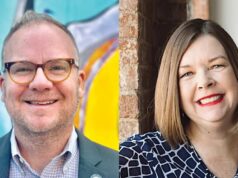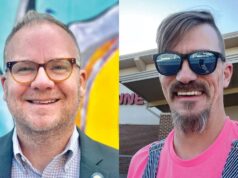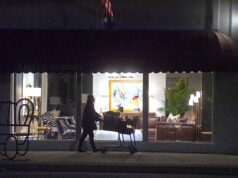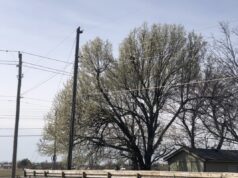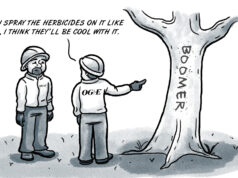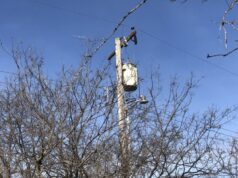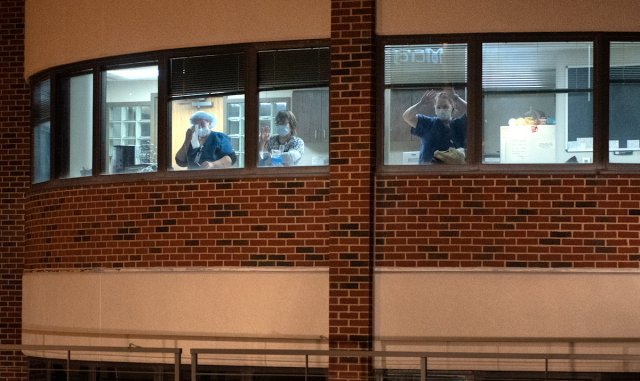

The flashing lights and car horns delivered a message.
A message from the parking lot to the building.
The message came from dozens of people sitting in cars that filled the visitor’s lot for dozens of people in scrubs and masks behind the hospital’s windows and walls.
The message came in the form of a rag-tag song of discordant honks and blinding car lights.
But the point was clear.
A few minutes earlier the only sound had been the scream of the siren of an EMSSTAT vehicle pulling into the “ambulance only” lane leading to the emergency room a short distance away. Another patient brought by mask-covered paramedics.
And then there was a honk. And then another. Then a headlight came on. And another. Then emergency flashers went on. And an orchestra of light and sound erupted from all the cars in the parking lot.
Some people rolled down their windows and cheered. Others waved. Dogs barked.
Within a minute, faces began to appear at the windows. First there were two. Then five. Then seven. The looks of the health care workers behind the glass made clear the message was received. They waved back.
That was the scene on Porter Street at 9:01 pm on a chilly Friday night outside Norman Regional Hospital.
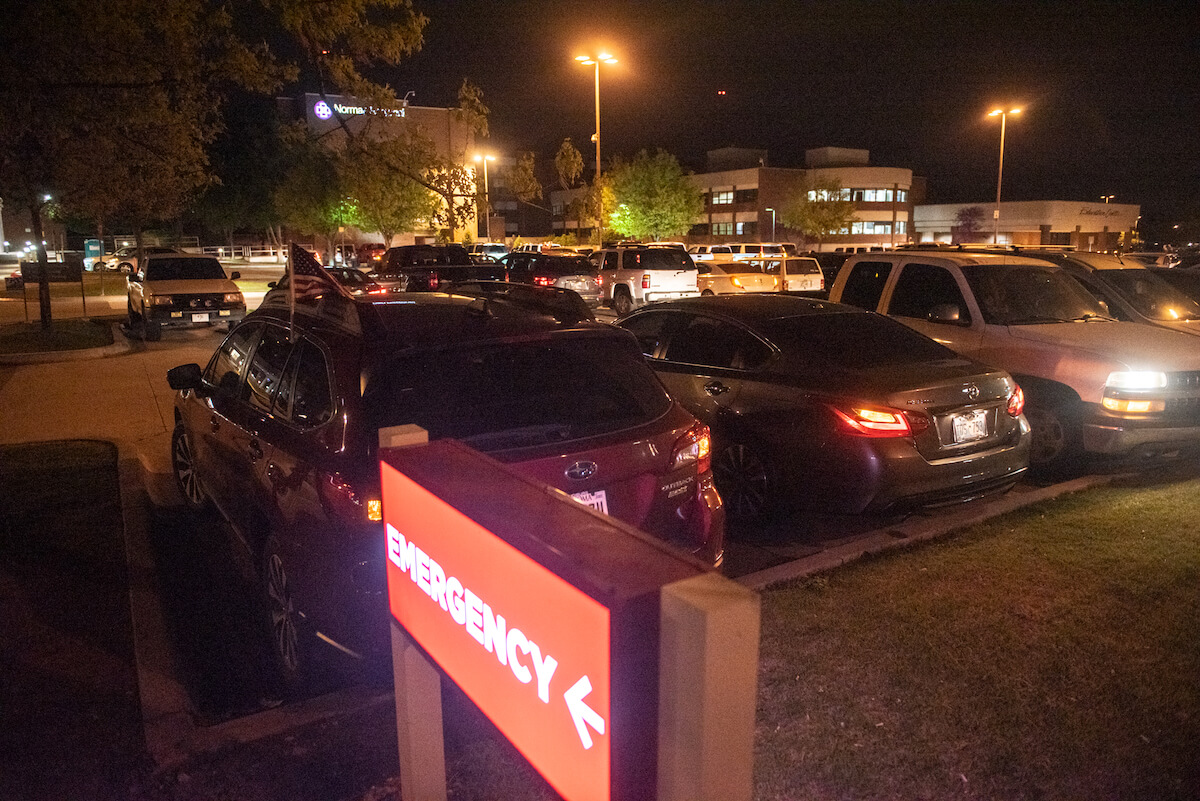
‘Thank you Norman Regional’ said the only way possible
Across town at the newer Norman Regional HealthPlex, a similar scene was unfolding.
At both hospitals, citizens had come to let nurses, doctors, ER attendants, lab techs and the cleaning crew — and all those other persons necessary to provide medical help to our neighbors who need it — know they are important and appreciated as they work to save lives from COVID-19.
There was no going inside to tell them. The hospitals are closed to all visitors. Public gatherings are prohibited by the government order. Most know they are dangerous anyway, given the contagious nature of this hidden menace — the novel coronavirus.
There was no crowd on foot in the parking lot. Most stayed in their cars. The six-foot social distancing rule was followed.
However, these limitations did not stop people from thanking hospital workers who do not have the option of staying sheltered in their homes. Or locked safely in their cars. And they gave thanks in the only way that would get the point across — with sound and lights.
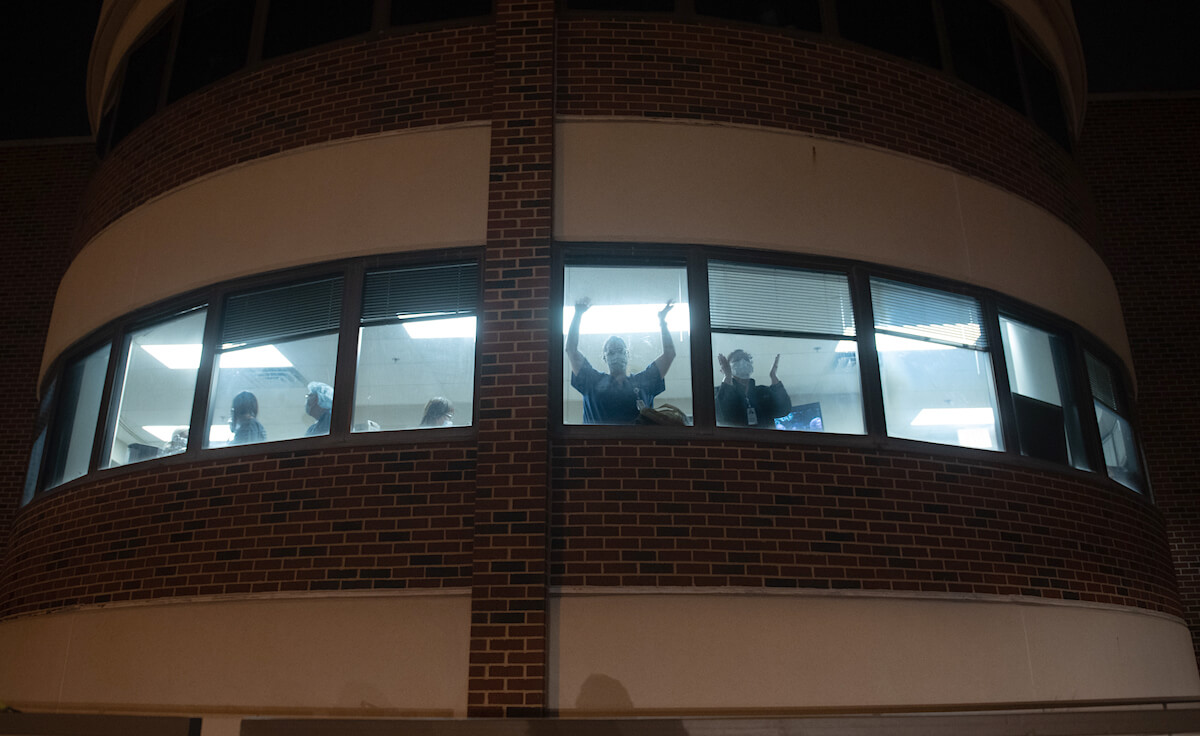
PPE: The fabric of their lives
These days, all hospital staff are wearing masks. And in those areas where contact with COVID-19 patients is possible, the hospital staff is bundled up in extra clothing, respirators, face shields and head protection.
It is the fabric and plastic barrier between them and serious, or possibly fatal, illness.
COVID-19 patients have walked into the Norman Regional Hospital emergency room. Others have come by ambulance from nursing homes. They are tested by the emergency room workers.
Norman Regional seems to be a receiving hospital for the area. COVID-19 transfers by ambulance from other hospitals are brought through a special entrance.
All those admitted for coronavirus end up on the fifth floor.
In the ICU, the physicians and nurses have become their proxy family.
Because no visitors are allowed, hospital staff members are keenly aware a patient might die without family present. It has happened eight times thus far since the pandemic reached Cleveland County.
It is expected to happen many more times before this is over.
Some hospital workers have used their cell phones so patients can FaceTime their loved ones.
It is not a normal time.
A mile away Campus Corner sat dark — the bars and restaurants shuttered. The university campus is closed, with students now learning online only from around the country.
There was no music at The Deli.
The only music in town played in parking lots at the hospitals.
And the musicians were just regular people playing for an audience risking their lives to save others.









